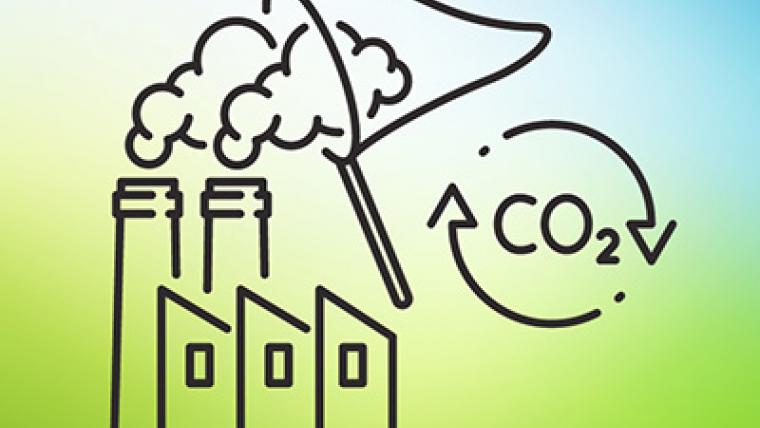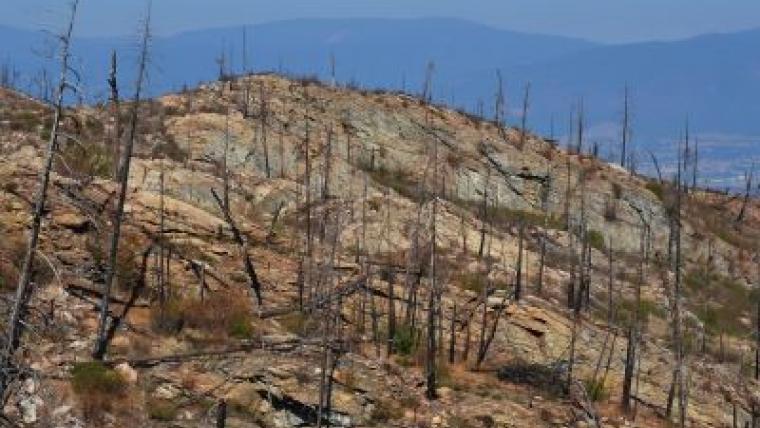A fresh approach to understanding the ‘Big River’ in Canada’s North
In Canada’s Arctic, where communities are experiencing the effects of a changing climate, there’s a rising sense of urgency. So — as fluctuating water levels start to impact daily life in the Mackenzie Delta region — a unique partnership was created to investigate further. Meet the diverse team that’s taking a fresh approach to conducting research in the North: the Gwich’in people who live in the region, Carleton University, the University of Victoria and the University of Alberta, as well as a research team from Natural Resources Canada.
July 2023
The mighty Deh Cho — the Mackenzie or “Big River” — is the longest river in Canada, flowing 1,700 kilometres through the Northwest Territories to the Beaufort Sea. It’s one of the North’s original highways and an essential lifeline for communities. Here, climate change has significant effects on daily life.
The Deh Cho or Mackenzie River is the second longest river in North America. The image of the river’s delta was captured by the Landsat 8 satellite in 2016. (NASA) Photo: Sarah Lord.
“Water levels have changed in the Mackenzie River Basin, and people don’t know why,” says Jennifer Galloway, a research scientist with the Geological Survey of Canada based in Calgary. “Water levels have been higher, and lower, including drought-like conditions in recent years.” When water levels are low, barges can no longer traverse the river, cutting off a lifeline to food and other crucial supplies. Changes are also seen in areas where many Gwich’in people rely on the land for sustenance and cultural heritage through traditional activities like hunting, trapping and fishing.
Jennifer and the project team saw what was happening and developed an integrated western-science and Indigenous-knowledge research approach that’s funded by the Geological Survey of Canada and ArcticNet, a Network of Centres of Excellence of Canada that studies the impacts of climate change and modernization in the coastal Canadian Arctic. The Gwich’in Renewal Resources Board (GRRB), the Gwich’in Tribal Council’s Department of Cultural Heritage, Carleton University, the University of Victoria and the University of Alberta are all co-investigators on the project, with Jennifer leading.
Team members collected peat core samples from 15 different remote locations.
Closing a knowledge gap
“It’s an ideal situation because there’s a knowledge gap that can be comprehensively addressed using different perspectives,” says Jennifer.
“Western-based scientists are trying to measure the environmental effects of climate change in the area using quantitative data. And the Gwich’in are also interested in how climate change might affect their lives and land, so they’re contributing a wealth of information from an Indigenous-knowledge perspective that can’t be achieved using western science.”
This combined approach can provide insight into past climate and even pre-industrial environments in the region.
“We’re really excited to see the results of the team’s research,” says Steve Andersen, GRRB wildlife biologist. “This work will help us better understand how water levels in the Mackenzie Delta have changed over time, so we know what normal variation looks like. By comparing this new data to existing conditions later, we’ll be able to get a sense of how strongly climate change is impacting the river.”
A critical resource
The team is investigating whether large-scale, regularly occurring climatic phenomena are impacting water levels in the Mackenzie River Basin. Of particular interest are the El Niño–Southern Oscillation cycle and the similar but longer-lasting Pacific Decadal Oscillation, both of which are climate patterns that can affect weather patterns in North America. “If that’s the case, and if we know these cyclical phenomena affect hydrology in the basin, it might be possible to predict future water levels and the impact on environments,” says Jennifer.
“This is a really multidisciplinary project that centres around a critical resource — water — which makes it so exciting to study,” says Anne Nguyen of Carleton University and a lead author of the study. “Not only does it combine many various aspects of biology, chemistry, geology and even engineering, but the project also relies on traditional knowledge, something that I think western-based scientists like me have a difficult time fully understanding.”
When COVID-19 led to travel restrictions, the Gwich’in Renewable Resources Board took the lead on conducting field work. Photos: Sarah Lord.
Teamwork for the win
As the project was getting underway in 2020, COVID-19 arrived. Since travel was restricted, the GRRB stepped up to lead and conduct the field work while ArcticNet supplied funding for helicopter support through its logistics grant program.
“Without the leadership of the Gwich’in Renewable Resources Board the field work required for this project could not have happened,” says Jennifer. Led by Sarah Lord of the GRRB, Gwich’in youth and community members from Inuvik, Tsiigehtchic and Fort McPherson travelled by helicopter to wetlands and bogs, landing on 15 different sites in the Gwich’in Settlement Area, an area of approximately 57,000 square kilometres in the north-western corner of the Northwest Territories. They gathered vegetation samples, water table measurements and drilled peat cores, staying in touch with team members thousands of kilometres away.
“This was my first experience collecting samples and recording data in the field,” says Julienne Chipesia, a first-year law student at the time. “The effort, soaked clothes and the number of times I got stuck made the experience even more memorable. To have the youth involved in fieldwork to further understand the environmental changes in our homeland is essential.”
Beyond stepping in to provide immediate groundwork, the Gwich’in people are contributing a wealth of traditional ecological knowledge through oral histories, patterns of land use and other observations that can only come from calling a place home for millennia.
“In order for us to understand the changes in climate in their entirety, we must first uphold Indigenous traditional knowledge and western science in the same manner,” says Arlyn Charlie, culture and heritage coordinator for the Gwich’in Tribal Council. “Only in doing so, will we be better equipped to combat the changes we are experiencing today, more than ever.”
Getting to the core of the matter
Researchers are analyzing the peat cores for important clues to changes over time. The cores contain the remains of plants that were once growing in the region, some going back thousands of years — the oldest peat core collected is a remarkable 5,900 years old! Climate modelling suggests that peatlands are highly sensitive to climate change. By studying the remains of tiny fossils of single-celled organisms preserved in deep layers of moss and the types of vegetation contained in a peat core, the team can reconstruct how various natural features — climate, plants, fires and water levels — have changed over time.
Equal weight, equal participation
“Collaborations that involve Indigenous knowledge holders are fundamental to research that seeks to identify regional-scale environmental trends, understand their socioecological impacts and support local and regional decision-making,” says Trevor Lantz from the University of Victoria
“There’s a real enthusiasm in many communities to lead and be involved in projects like this,” says Jennifer. “The community has managed to translate, manage and digitally archive 178 years of Indigenous knowledge.”
The exciting part of science…
About two-thirds of the lab work is done. “There is a lot more to learn, and I’m looking forward to seeing how the results come together,” says Anne.
Most peat cores show that wetter conditions or higher water levels occurred in more recent years compared with hundreds to thousands of years ago. Yet it’s too early to say what the results will reveal. “It’s hard to predict what we’re going to find, and that’s part of the exciting part of science,” says Jennifer. “Sometimes you can get to the end of your project only to discover something completely new you weren’t expecting!”
Whatever the outcome, by bringing together Indigenous knowledge and western science, researchers may be one step closer to knowing why water levels in the “Big River” are fluctuating.
Discover more:
Data download: GEOSCAN: Mackenzie River Basin Project
Traditional Knowledge (Simply Science podcast)
Indigenous science - Canada.ca
Page details
- Date modified:

